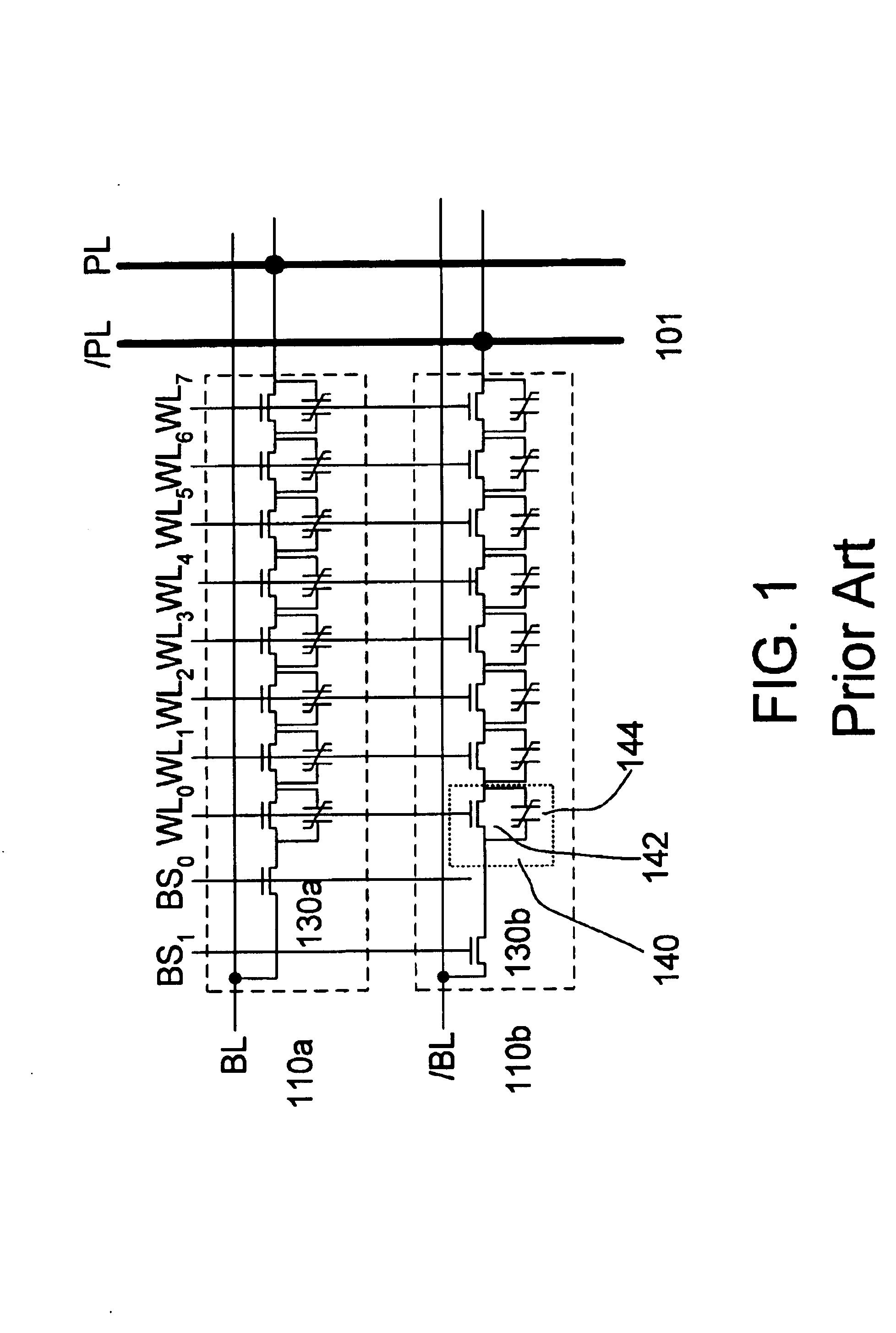Redundancy in series grouped memory architecture
a memory architecture and series grouped technology, applied in the field of memory integrated circuits, can solve the problems of increasing the probability of a failure in the redundant element itself, requiring the replacement of the whole block, and inefficient chained architecture redundancy schemes that use significant chip area, so as to achieve the effect of improving the redundancy schem
- Summary
- Abstract
- Description
- Claims
- Application Information
AI Technical Summary
Benefits of technology
Problems solved by technology
Method used
Image
Examples
Embodiment Construction
FIG. 2 shows a portion 201 of an IC with redundancy in accordance with one embodiment of the invention. A pair of bitlines (BL and / BL) which represents a column is shown. A plurality of columns are interconnected by wordlines to form a memory block or array. A sense amplifier 295 is coupled to one end of the bitlines. The bitlines each includes a memory chain (210a or 210b). The memory cells 240 of a chain, each with a transistor 242 coupled to a capacitor 244 in parallel, are coupled in series. The memory chain comprises X number of cells 226, where X is a whole number. For practical reasons, X is at least 2. Illustratively, a chain comprises 8 memory cells. Memory chains of other sizes are also useful. Preferably, the memory chain comprises 2y memory cells, where y is ≧1. The gates of the cell transistors can be gate conductors which are coupled to or serve as wordlines. The memory cells are addressed by wordlines WL0-WLx−1.
A selection transistor 230 is provided to selectively co...
PUM
 Login to View More
Login to View More Abstract
Description
Claims
Application Information
 Login to View More
Login to View More - R&D
- Intellectual Property
- Life Sciences
- Materials
- Tech Scout
- Unparalleled Data Quality
- Higher Quality Content
- 60% Fewer Hallucinations
Browse by: Latest US Patents, China's latest patents, Technical Efficacy Thesaurus, Application Domain, Technology Topic, Popular Technical Reports.
© 2025 PatSnap. All rights reserved.Legal|Privacy policy|Modern Slavery Act Transparency Statement|Sitemap|About US| Contact US: help@patsnap.com



